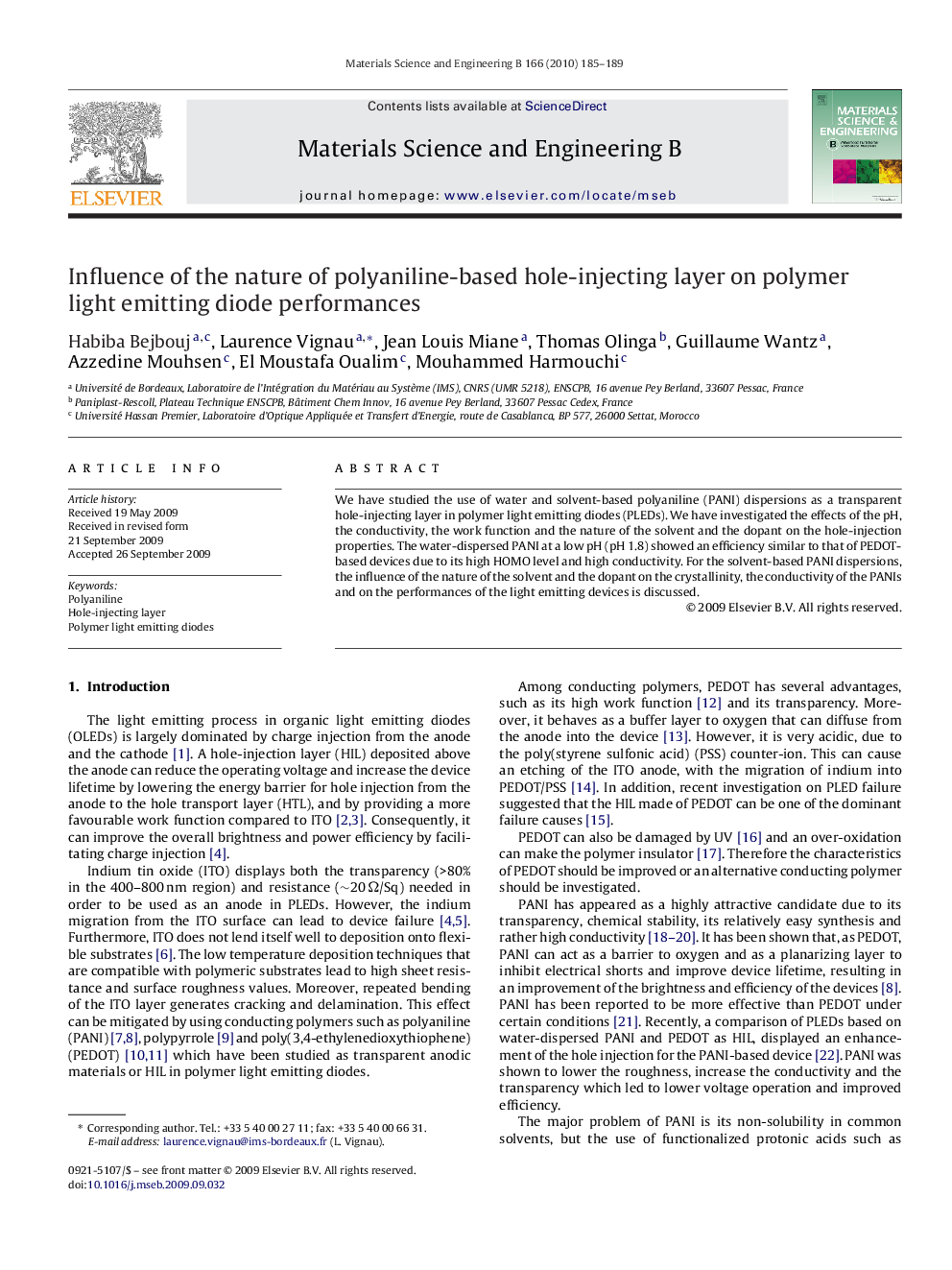| Article ID | Journal | Published Year | Pages | File Type |
|---|---|---|---|---|
| 1530461 | Materials Science and Engineering: B | 2010 | 5 Pages |
Abstract
We have studied the use of water and solvent-based polyaniline (PANI) dispersions as a transparent hole-injecting layer in polymer light emitting diodes (PLEDs). We have investigated the effects of the pH, the conductivity, the work function and the nature of the solvent and the dopant on the hole-injection properties. The water-dispersed PANI at a low pH (pH 1.8) showed an efficiency similar to that of PEDOT-based devices due to its high HOMO level and high conductivity. For the solvent-based PANI dispersions, the influence of the nature of the solvent and the dopant on the crystallinity, the conductivity of the PANIs and on the performances of the light emitting devices is discussed.
Related Topics
Physical Sciences and Engineering
Materials Science
Electronic, Optical and Magnetic Materials
Authors
Habiba Bejbouj, Laurence Vignau, Jean Louis Miane, Thomas Olinga, Guillaume Wantz, Azzedine Mouhsen, El Moustafa Oualim, Mouhammed Harmouchi,
